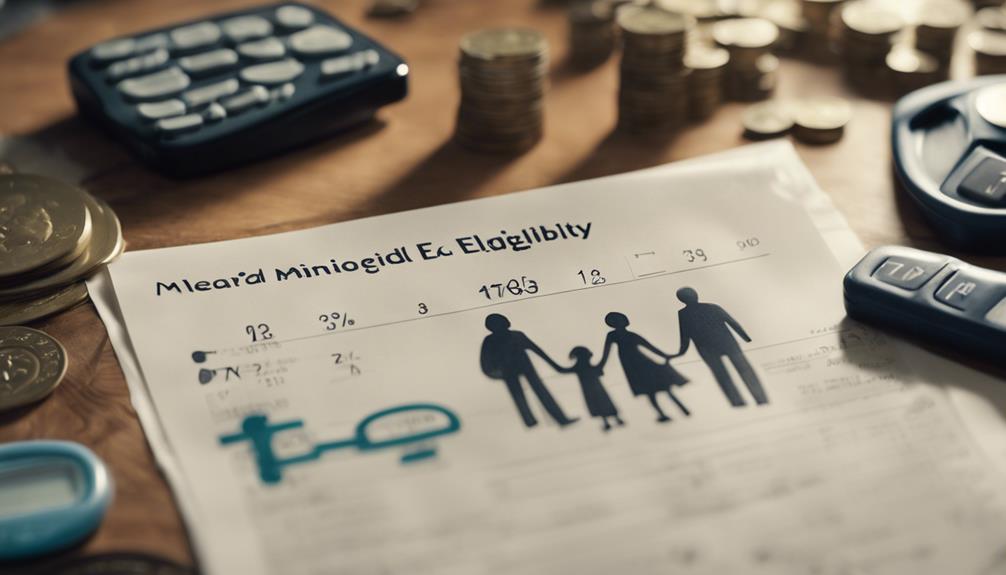
Billing Medicaid for services can seem like a daunting task, but with the right knowledge and tools, you can navigate the process with ease! Whether you’re a healthcare provider, a medical office administrator, or a caregiver, understanding how to bill Medicaid is essential for ensuring that you receive the compensation you deserve for the services you provide. In this article, we’ll walk you through the ins and outs of Medicaid billing, making it accessible and even enjoyable. So, let’s roll up our sleeves and get started on this Medicaid billing adventure together!
1. Unlocking the Secrets: Medicaid Billing Made Easy!
Welcome to the world of Medicaid billing, where clarity and organization can transform a seemingly complex process into a smooth operation! One of the first secrets to effective Medicaid billing is understanding the specific requirements of the Medicaid program in your state. Each state may have different rules, regulations, and billing forms, so it’s crucial to familiarize yourself with the unique specifics that apply to your practice.
Additionally, it helps to develop a structured approach to billing. Establish a routine for gathering necessary information, submitting claims, and following up on unpaid bills. Trust us, a little organization goes a long way towards making the Medicaid billing process as easy as pie!
2. Let’s Get Started: Your Medicaid Billing Adventure Awaits!
Are you ready to embark on your Medicaid billing adventure? The first step is to ensure that you are enrolled as a Medicaid provider. This means completing any necessary applications and paperwork to become a registered provider in your state’s Medicaid program. Once you’re officially on board, you’ll be able to bill for services rendered to eligible clients.
Don’t forget to educate your team! Whether you’re working with administrative staff or fellow healthcare providers, everyone involved in the billing process should understand their roles and responsibilities. This teamwork will set the stage for a seamless billing journey, ensuring everyone is on the same page!
3. Know Your Codes: Demystifying Medicaid Billing Jargon
In the world of Medicaid billing, codes are your best friends! They help you accurately represent the services provided and ensure that you receive the correct reimbursement. Familiarize yourself with the Current Procedural Terminology (CPT) codes and the Healthcare Common Procedure Coding System (HCPCS) codes, as these will be essential in your billing process.
Take time to hang out with the coding manuals and resources provided by your state’s Medicaid program. They can be a treasure trove of information, helping you decode billing jargon and enabling you to submit accurate claims. Remember, the more you know about these codes, the less intimidating they become!
4. The Art of Documentation: Perfecting Your Paper Trail
Ah, documentation—the backbone of successful Medicaid billing! To get reimbursed for your services, you’ll need to provide comprehensive documentation that supports your claims. This includes detailed notes about the services provided, patient diagnoses, and any other relevant information. Think of your documentation as a story that tells the tale of your patient’s journey and the care they received.
To perfect your paper trail, develop a systematic approach to record-keeping. Utilize templates or electronic health record systems to streamline the process. The more organized your documentation, the easier it will be to substantiate your billing claims and avoid delays in payment!
5. Claim Submission 101: Fast-Track Your Success Today!
Submitting claims is the moment where all your hard work pays off! To fast-track your success, ensure that you’re using the correct forms for your state’s Medicaid program. Double-check that all required information is included, such as patient demographics, service dates, and coding. Missing even a small detail can delay your payment!
Consider using electronic billing methods when available, as these can simplify the submission process and often lead to faster reimbursements. But don’t forget—always keep a copy of your submitted claims for your records. If a claim is denied, having documentation at your fingertips will help you resolve issues more efficiently.
6. Troubleshooting Tips: Tackle Common Billing Hiccups
Every Medicaid billing journey has its bumps along the road, but fear not! Common issues like claim denials or payment delays can often be resolved with a little troubleshooting. If you receive a denial, carefully review the reason provided. Was there a coding error? Did you forget to include necessary documentation? Understanding the cause will help you correct and resubmit the claim with confidence.
Stay proactive by establishing a follow-up routine for unpaid claims. A gentle inquiry can go a long way in expediting payments. And remember, you’re not alone in this; connecting with other healthcare providers or billing specialists can provide valuable insights into overcoming common hurdles in Medicaid billing.
7. Master the Process: Medicaid Billing Checklist to Follow
A great way to stay organized and efficient in Medicaid billing is to create a comprehensive checklist. Start with the basics: ensure patient eligibility, verify insurance details, and gather necessary documentation. Then, move on to coding, claim submission, and follow-up procedures.
By following a checklist, you can ensure that no detail is overlooked, giving you peace of mind as you navigate the complexities of Medicaid billing. Plus, there’s nothing like the satisfaction of ticking off completed tasks, making the entire process feel a bit more like a fun game!
8. Stay Informed: Keeping Up with Medicaid Policy Changes
The world of Medicaid is ever-evolving, with new policies and regulations coming into play regularly. Staying informed about these changes is crucial for successful billing. Subscribe to newsletters from your state’s Medicaid program or join professional organizations that provide updates on policy developments.
Engaging in continuous education through webinars, workshops, or online courses can also be beneficial. These resources will empower you with the knowledge needed to adapt your billing practices as policies change, ensuring your services remain compliant and reimbursable.
9. Best Practices: Enhance Your Billing Efficiency Today!
In the realm of Medicaid billing, efficiency is key. Adopting best practices can significantly improve your billing processes. Consider automating repetitive tasks, such as appointment reminders or billing notifications, to free up time for more critical activities. Utilizing billing software can also streamline workflow and reduce errors.
Moreover, fostering open communication with your clients about their coverage and potential costs can lead to smoother transactions. By ensuring that patients are informed, you’ll reduce confusion and create a more positive billing experience for everyone involved!
10. Celebrate Success: Navigating Medicaid Billing Like a Pro!
With your newfound knowledge and strategies at hand, it’s time to celebrate your success in navigating the complex world of Medicaid billing! As you implement these tips and tricks, you’ll find yourself billing with confidence and ease. Each successful claim processed is a step closer to supporting the patients who rely on your services!
So, take a moment to give yourself a well-deserved pat on the back. You’re mastering the art of Medicaid billing, and that’s something to cheer about! Keep the momentum going, and continue to refine your process—you’re well on your way to becoming a Medicaid billing pro!
Billing Medicaid for services doesn’t have to be intimidating. With the right knowledge, organization, and a cheerful attitude, you can turn this essential task into a manageable and rewarding adventure. By following the tips outlined in this article, you’ll navigate the complexities of Medicaid billing with confidence, ensuring that you receive the compensation you deserve for your valuable services. Now, gear up and enjoy your Medicaid billing journey—you’ve got this!




